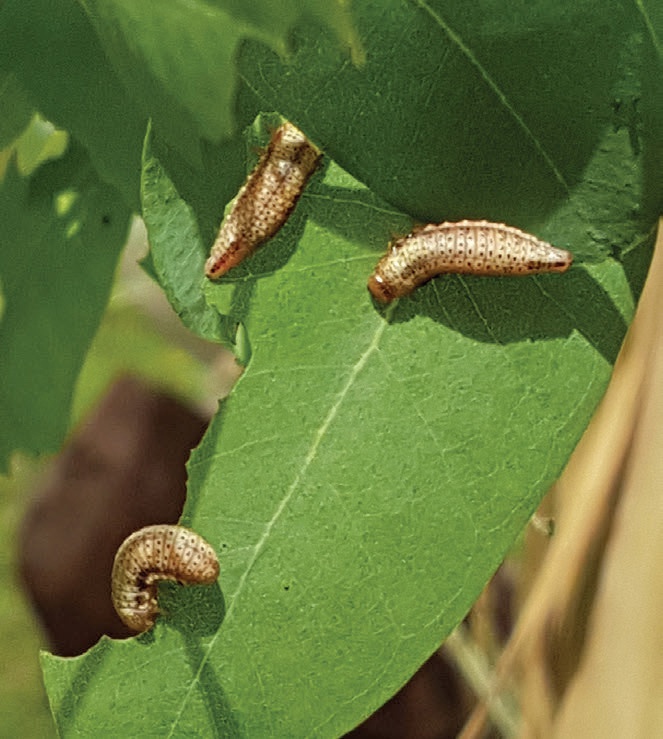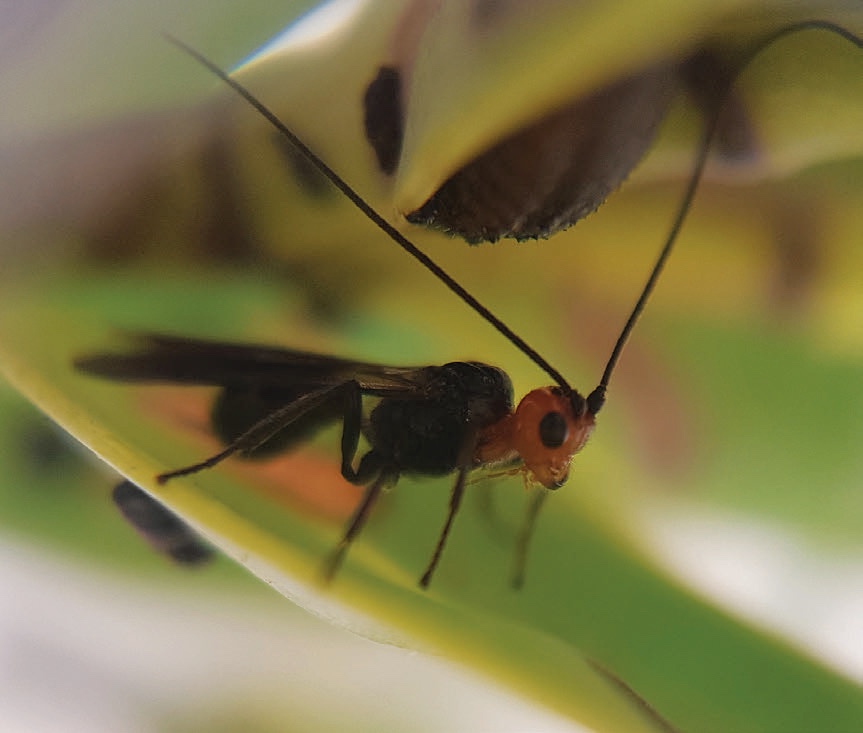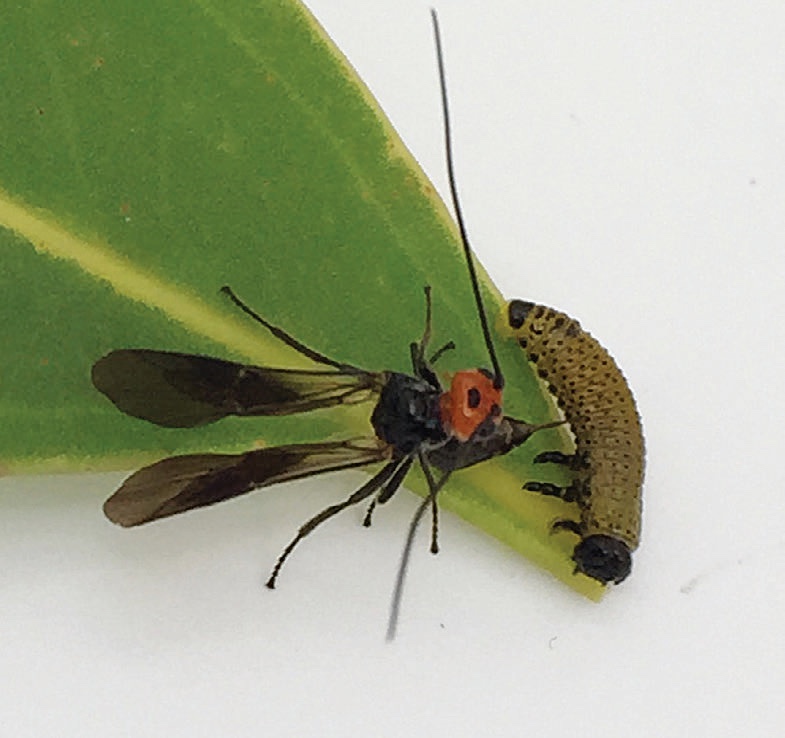
This is free.
Good news for eucalypt growers - The approved release of Paropsis charybdis bio-control agent
Toni Withers and Michelle Harnett, New Zealand Tree Grower May 2019.
The approval to release the parasitoid wasp Eadya daenerys to control eucalyptus tortoise beetle Paropsis charybdis by New Zealand’s Environmental Protection Authority is the culmination of work that started at Scion in the 1970s. The Australian eucalyptus tortoise beetle, Paropsis charybdis, has long been loathed by New Zealand eucalypt growers. Here for more than a century, a severe infestation of Paropsis can leave trees stripped of all new leaves and slow their growth. Successive infestations will kill Eucalyptus nitens.
The damage caused by Paropsis is slowing the establishment of a New Zealand hardwood resource. This includes fibre for corrugated durable cardboard and timber for furniture, flooring and interior fittings. The pest also threatens the naturally ground-durable species being tested by the NZ Drylands Forests Initiative. Until now, P. charybdis is the only production forestry insect pest which is routinely controlled in New Zealand by aerial spraying of insecticide to maintain the growth rate of E. nitens plantations.
Aerial spraying is not the best solution for a number of reasons. It is expensive for owners of small eucalypt plantations, especially if control is required every year. The future use of the most effective insecticide, synthetic pyrethroid alpha cypermethrin, is also uncertain. The Environmental Protection Authority has announced they are reassessing the safety of pyrethroid insecticides commonly used in New Zealand.
We have limited other options for managing pests like P. charybdis in plantations, and these tend to be less effective on the adult life stage. Phasing out the use of synthetic pyrethroids in New Zealand will have flow- on effects upon many primary producers, including eucalypt growers. Additionally, forest certification bodies like the Forest Stewardship Council promote the minimising of negative environmental and social effects of pesticides.

A new biological control agent
Biological control may be the final option for an economically viable and environmentally sustainable way of combatting Paropsis. Several attempts have been made to introduce biocontrol agents. Although some improvements were made, the spring generation of the beetle was escaping all natural enemies.
Research since 2011 has focused on finding a new biological control agent and drawn in collaborators from both sides of the Tasman. The work has been supported by the NZFFA along with MPI’s Sustainable Farming Fund, the Specialty Wood Products partnership, MBIE, Southwood Exports Ltd, and Oji Fibre Solutions NZ Ltd as well as major tree growers.
The eucalyptus tortoise beetle is not a problem in Tasmanian eucalypt forests, suggesting a range of natural enemies in the environment keep it under control.
One of these enemies, a small parasitoid wasp that lays eggs in the larvae of P. charybdis, which then hatch and develop inside them, was identified as Eadya daenerys. As a bonus, E. daenerys also stings Paropsisterna agricola, or southern eucalyptus leaf beetle in Australia.

Work in New Zealand and Tasmanian laboratories established that E. daenerys was a good candidate for a biocontrol agent even though it only produces one generation a year. The next step in the testing process was to make sure that introducing a new species into New Zealand would not harm any indigenous or exotic beetles that were themselves acting as biocontrol agents against weeds.
The research team was especially concerned about whether or not any indigenous beetle would be vulnerable. This was complicated by the fact the local beetles are very rare and some had not been seen for decades. The search for indigenous beetles took Scion staff into the rugged mountains of Kahurangi National Park in the north west of the South Island where they shook hebe plants to see what fell out.
One flightless beetle species, Allocharis tarsalis, was rediscovered after 38 years. Specimens were brought back to Scion where tests exposing Allocharis larvae to egg-laying Eadya females found that the wasp would occasionally attack the beetle larvae, but no wasp larvae ever survived to adulthood.

A big tick
Experimental work completed, Scion’s application to the Environmental Protection Authority for permission to release E. daenerys was approved in February. Next summer, a fresh collection of parasitoids will be collected from Tasmanian forests. The E. daenerys obtained will be imported into Scion’s insect containment facility in Rotorua. Then, if the new imports are shown to be free of any viruses or bacteria, the first field release of the next generation may take place in 2020.
Good things take time. It will not happen overnight, but it will happen. Much effort and patience will be needed to achieve the establishment of this parasitoid in eucalypt-growing regions of New Zealand. This is a challenge Scion is ready to take on whole heartedly. Look out Paropsis, life is not going to be so easy for you from now on.
Toni Withers is a senior forest entomologist, and Michelle Harnett is Scion’s science communicator.

 Farm Forestry New Zealand
Farm Forestry New Zealand